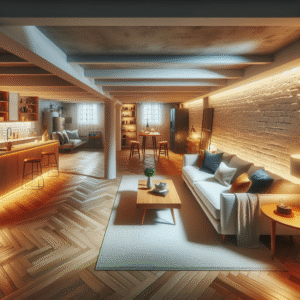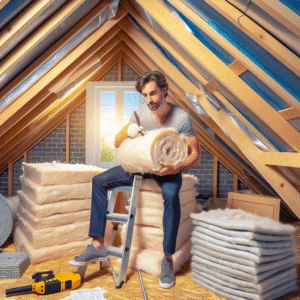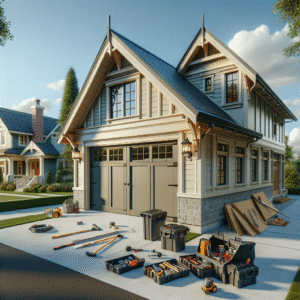Considering adding an elevator to your home? Whether it’s for boosting accessibility or adding a touch of luxury, home elevators are becoming increasingly popular in modern residences. From enhanced mobility for the elderly or those with disabilities to increasing your property’s value, the benefits are clear. However, choosing the right type of elevator and understanding the installation process can be daunting. In this guide, tailored specifically for our readers at BuildNet, we’ll walk you through everything you need to know about home elevators, ensuring you make informed decisions for your space.
Benefits and Considerations of Home Elevators
Installing a home elevator can significantly enhance the functionality and style of your home. Let’s delve into the advantages and essential considerations to keep in mind:
- Increased Accessibility: An elevator can greatly aid those with mobility issues, allowing easy access between floors.
- Property Value: Homes with elevators tend to have a higher market value, appealing to a broader range of buyers.
- Safety Features: Modern elevators come equipped with safety features such as automatic brakes and emergency alarms, ensuring peace of mind.
However, think about the required space, potential structural changes to your home, and the initial cost, which may be substantial. Regular maintenance should also be factored into long-term considerations.
Choosing the Right Type of Home Elevator for Your Space
Selecting the perfect elevator involves considering your home’s layout, your personal needs, and aesthetic preferences. From hydraulic to pneumatic models, each type offers unique benefits.
Step-by-Step Guide to Installing a Home Elevator
Installing an elevator in your home is a detailed process that involves several key steps. From choosing a contractor to the final installation, we’ll guide you through each phase to help manage your project effectively.
Ready to enhance your home’s functionality and style with an elevator? Stay tuned as we dive deeper into each topic, providing you with all the information you need to bring this exciting upgrade to your home.

If you’re ready to take your home improvement or construction project to the next level, we can help! Find trusted contractors on BuildNet, whether you’re looking for renovations, new builds, electrical work, plumbing, or anything in between. Our directory connects you with qualified professionals who can make your vision a reality.
Benefits and Considerations of Home Elevators
Adding an elevator to your home isn’t just about luxury or making a style statement—though it certainly adds a touch of both! It’s also about enhancing accessibility, increasing property value, and improving lifestyle. In this detailed exploration, we’ll dive into the various benefits and considerations of installing a home elevator, offering you insights to decide if this upgrade is right for your space.
Enhancing Accessibility & Independence
One of the foremost benefits of having a home elevator is the increased accessibility it provides. For individuals with mobility challenges or those planning for an aging-in-place scenario, elevators offer a significant boost to independence. Moving between floors becomes a safe and effortless task, eliminating the strain associated with stairs. This is particularly crucial in multi-story homes where daily activities may require frequent floor changes.
Boosting Home Value
Investing in a home elevator can also lead to a substantial increase in your property’s market value. Potential buyers often view residential elevators as a desirable feature, especially in upscale neighborhoods or in regions where multigenerational living is common. This addition not only sets your property apart from others but may also speed up the selling process when it’s time to move on.
Safety Considerations
While the convenience of a home elevator is unmatched, safety remains a paramount concern. Modern home elevators come equipped with a variety of safety features such as emergency stops, battery backup systems, and automatic door locking mechanisms. These features ensure that users are safe from accidental falls or entrapments. However, it’s crucial to choose models that adhere to strict safety standards and to have them installed by certified professionals.
Space and Design Integration
Think installing an elevator means major renovations and disruptions? Think again. Today’s residential elevators come in compact and customizable designs that can seamlessly integrate into your existing home layout. From sleek, glass-paneled models to more traditional designs that blend with your home decor, there’s an elevator to suit every taste and space requirement.
Energy Efficiency and Operational Costs
Modern elevators are designed with energy efficiency in mind. Many models use systems that consume less power, helping keep operational costs down. However, it’s important to consider ongoing maintenance and potential repairs down the line. Regular servicing ensures that your elevator remains in good working condition and continues to operate efficiently. This is a factor that should be included in your budget planning.
Customization Options
When it comes to personalizing your home elevator, the possibilities are vast. From the choice of materials to lighting and control panels, you can customize almost every aspect of your elevator to match your personal style and needs. This flexibility allows the elevator to become a part of your home’s charm, not just a functional element.
Permitting and Legal Requirements
Before installing a home elevator, it’s essential to understand the local codes and regulations. Depending on where you live, there may be specific requirements that need to be met and permits that need to be obtained. Engage with local authorities or hire a professional who can navigate these legal waters, ensuring that your elevator project is compliant and properly documented.
Long-Term Benefits vs. Immediate Costs
The initial cost of installing a home elevator can be significant. However, when you consider the long-term benefits—increased property value, enhanced quality of life, reduced risk of falls, and greater accessibility—the investment often justifies itself. It’s a forward-thinking addition to any home, promising returns both in lifestyle and financial terms.
In summary, while the allure of adding an elevator to your home includes a blend of luxury, convenience, and style, the decision to install one should also consider practical aspects like safety, costs, and legal requirements. By understanding both the benefits and considerations, homeowners can make informed decisions that align with their needs and expectations, potentially transforming their living experience.
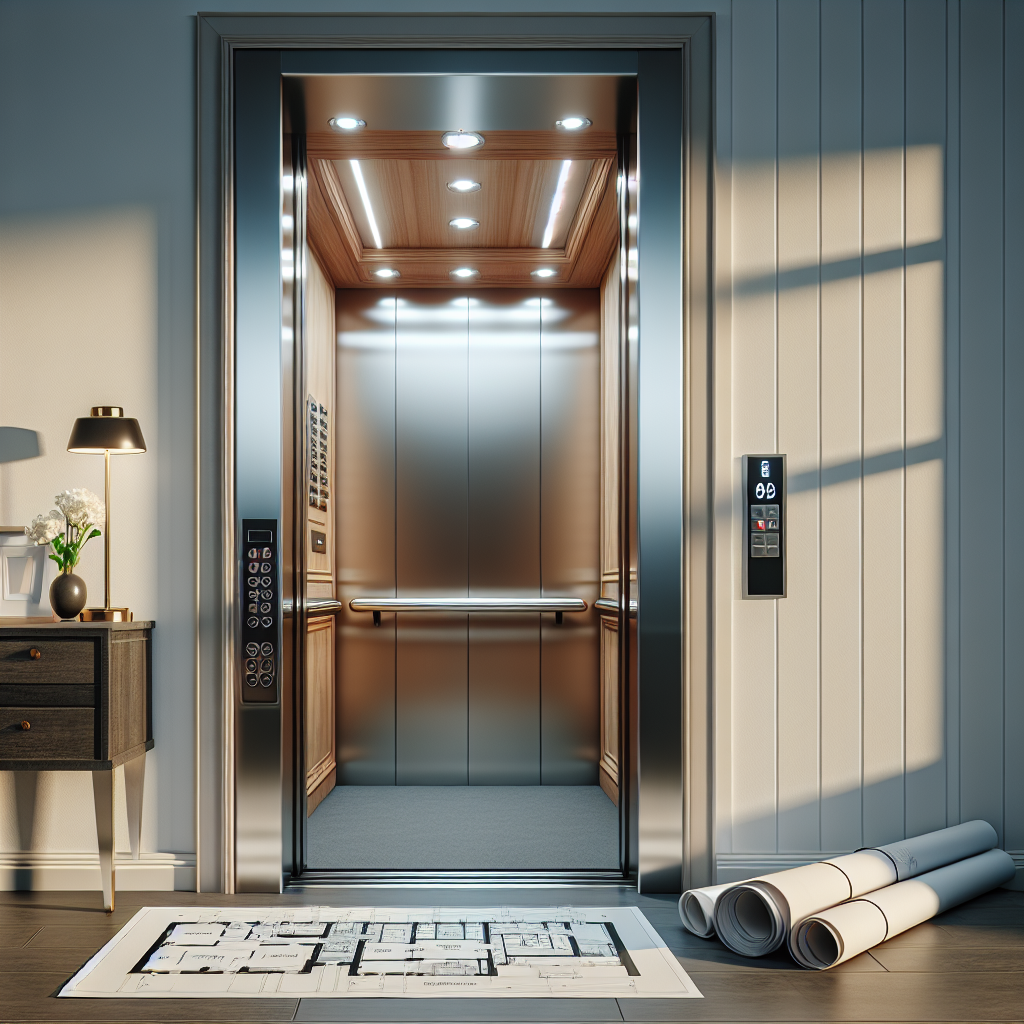
Choosing the Right Type of Home Elevator for Your Space
Considering adding an elevator to your home? That’s a big step towards enhancing mobility and increasing your property value! Whether you’re looking to improve accessibility or simply want to add a touch of luxury, picking the right type of home elevator is crucial. Let’s dive into the different options available and find the best fit for your home’s structure and your personal style!
Understanding the Different Types of Home Elevators
First off, it’s important to know what’s out there. Home elevators can be categorized by their driving mechanisms, each offering distinct advantages. Here’s a quick overview:
- Hydraulic Elevators: Known for their smooth ride and substantial lifting capabilities. They require a machine room and can be more expensive, but are highly reliable.
- Traction Elevators: These use a counterweight system, are more energy-efficient than hydraulic systems, and don’t need a separate machine room.
- Machine Room-Less (MRL) Elevators: A newer technology that saves space and energy. Ideal for modern homes with limited space.
- Pneumatic Elevators: Operate with a vacuum system, are compact, and easy to install. They offer a panoramic view of your home but have a smaller load capacity.
Each type has its unique installation requirements and benefits, so considering your home’s layout and your family’s needs will guide your decision effectively.
Factors to Consider When Choosing Your Home Elevator
Now that you’re familiar with the types, how do you pick the right one? Here are some key factors to consider:
- Space: How much room do you have? Hydraulic elevators might require more space for a machine room, whereas pneumatic or MRL elevators could be more space-efficient.
- Budget: What’s your budget? Hydraulic systems might be more costly upfront due to their complex installation and machinery, while pneumatic elevators can be more budget-friendly.
- Aesthetic: What style suits your home? If you’re looking for something that makes a statement, a glass pneumatic elevator might be your pick. For a more classic look, a traction or hydraulic elevator could blend seamlessly.
- Usage: How often will the elevator be used? For frequent use, a durable and fast system like the hydraulic or traction elevator might be preferable.
Considering these factors will help you narrow down the best type of elevator for your home. But what about the specifics of each elevator type? Let’s break it down further.
Detailed Look at Home Elevator Types
Hydraulic Elevators
If you’re looking for reliability and are not constrained by space, hydraulic elevators might be the way to go. Ideal for houses with multiple stories, they offer a smooth ride and can handle heavier loads. Remember, they do require a bit of construction, as you’ll need a pit and a machine room.
Traction Elevators
For those who prioritize energy efficiency and a quieter operation, traction elevators are a great choice. They work well in residential spaces due to their sleek design and efficient operation, requiring no additional space for machinery.
Machine Room-Less Elevators
MRL elevators are perfect for smaller homes or for those who prefer a minimalist design. They provide a solution that occupies less space without sacrificing performance, and they’re becoming increasingly popular in new home constructions.
Pneumatic Elevators
These are certainly eye-catching with their modern and sleek design. Pneumatic elevators are best for homes that need a compact solution without major renovations. They are easy to install and maintain, making them ideal for single-person use or lighter loads.
Choosing the right elevator for your home can significantly enhance your living experience and increase the value of your property. It’s a decision that involves considering your architectural space, personal needs, and aesthetic preferences. By understanding the different types of home elevators and considering how they align with your requirements, you can make an informed decision that benefits you and your home for years to come.
Whether you’re in New York, Los Angeles, or anywhere in between, local experts are ready to help you with your home elevator installation. Remember, consulting with a professional can provide personalized insights and help ensure that your home elevator project goes smoothly, adhering to all local regulations and safety standards.
Embrace the upgrade—your modern, accessible home awaits!
Step-by-Step Guide to Installing a Home Elevator
So, you’re considering adding a home elevator? That’s a big move, but definitely exciting! It’s not just an elegant addition; it’s a practical one too, especially for enhancing accessibility and increasing your home’s value. In this guide, we’ll dive into the essentials of installing a home elevator, making it as straightforward and stress-free as possible. Whether you’re in New York, Los Angeles, or anywhere in between, we’ve got you covered—with a local touch!
Step 1: Planning and Preparation
Before you even think about breaking ground, there’s plenty to consider. Start by assessing your needs and understanding the space you have. Ask yourself the following:
- Why am I installing an elevator? Is it for mobility issues, or perhaps for increasing property value?
- Where will it fit best? You’ll need to think about both vertical and horizontal space.
- What is my budget? Keep in mind both installation and future maintenance costs.
Once you’ve got a clear picture, it’s time to obtain the necessary permits. Local building codes can vary, so check with your city or town’s building department to ensure everything is up-to-code.
Step 2: Choosing a Contractor
Installing an elevator isn’t a DIY job. It requires professional expertise. Here’s how to find the right contractor for the job:
- Look for experience: Choose a contractor who has installed home elevators before. They’ll understand the nuances of the job.
- Check reviews and references: Past customer experiences can give you a good insight into what to expect.
- Verify licenses and insurance: This protects you in case anything goes wrong during the installation.
Consider looking into local contractors through platforms like BuildNet, which lists verified professionals in your area. This helps ensure that you’re hiring someone familiar with local regulations and building codes.
Step 3: Selecting Your Elevator Model
There are several types of home elevators, from traditional cable elevators to modern pneumatic models. Discuss with your contractor which type best suits your home’s structure and your personal needs. Remember, the right model should blend functionality with aesthetics.
Step 4: Preparing Your Home
Getting your home ready for the elevator is next. This might involve some construction to create a hoistway, machine room (if required), and alterations to electrical systems. Here’s what typically happens:
- Building the hoistway: This is the shaft where your elevator will travel. It needs to be built to specific dimensions as per the model you choose.
- Electrical preparations: Home elevators need power, so you may need to upgrade your home’s electrical capabilities to accommodate the new load.
- Safety checks: It’s crucial to ensure that all safety measures are in place, including emergency stops and alarm systems.
During this phase, regular inspections might be required to ensure that the construction adheres to local safety standards and building codes.
Step 5: Installation
This is where things get real! Your contractor and their team will install the elevator unit in the prepared space. This process usually includes:
- Setting up the car: The actual elevator car is installed within the hoistway.
- Installing machinery: Depending on your elevator type, this could involve setting up cables, a hydraulic pump, or a vacuum system.
- Finishing touches: This includes the doors, lighting, and control panels inside the elevator car.
During installation, ensure your contractor conducts thorough testing to confirm that everything is functioning safely and efficiently.
Step 6: Final Inspection and Handover
Almost done! Before you can start using your new home elevator, it needs to pass a final inspection. This is typically conducted by a representative from the local building authority. They will check to ensure the installation meets all required codes and safety standards. Once it passes inspection, you’ll receive an official sign-off, and the elevator is yours to use!
Remember, while installing a home elevator is a substantial project, with the right preparation and a skilled team, it can go smoothly, enhancing the functionality and value of your home. Good luck, and here’s to a successful installation!
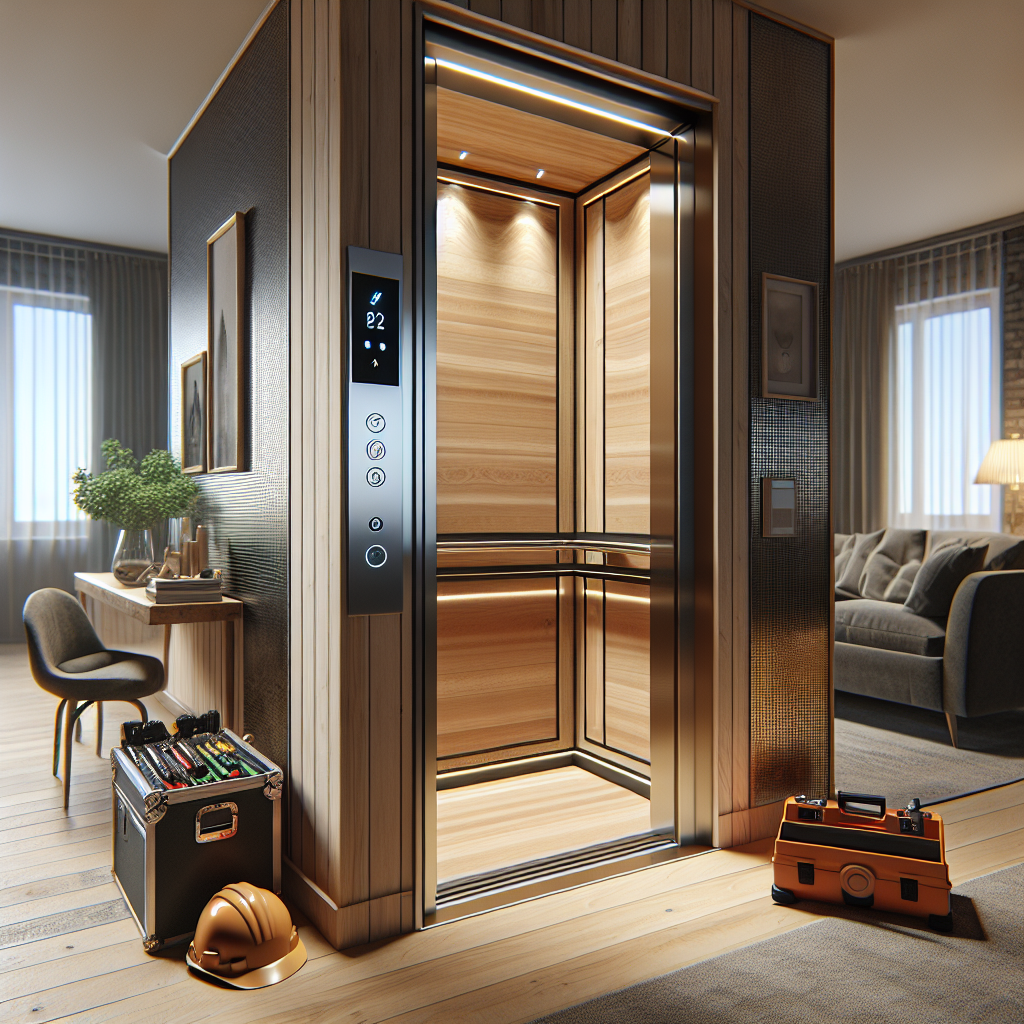
What are the benefits of installing a home elevator?
Installing a home elevator offers numerous benefits, including increased home value, improved accessibility, and enhanced convenience. They are particularly beneficial for individuals with mobility issues or for families with elderly members, making it easier for them to access different floors without the strain of stairs. Additionally, home elevators can make your home more attractive to future buyers who might be looking for these features.
What should I consider before installing a home elevator?
Before installing a home elevator, consider the cost, available space, and structural implications for your home. It’s also important to think about the type of elevator that best suits your needs, the maintenance it will require, and the potential increase in energy usage. Consulting with a professional can help address these considerations and ensure that your home is suitable for an elevator installation.
How do I choose the right type of home elevator for my space?
Choosing the right type of home elevator depends on your specific needs, the layout of your home, and your budget. Options range from traditional cable elevators to pneumatic vacuum elevators that require less space and are easier to install. Consider factors such as the size of the elevator, its carrying capacity, and how it will blend with your home’s decor.
What is involved in the installation process of a home elevator?
The installation process typically involves several steps, including an initial consultation, site inspection, design and planning, construction modifications to your home, and the actual installation of the elevator. This process can take several weeks to months depending on the complexity of the installation and the type of elevator you choose.
Are there specific safety regulations or codes for home elevators?
Yes, home elevators must comply with specific safety codes and regulations which can vary by location. These regulations often include requirements for emergency controls, door locks, and regular maintenance checks. It’s essential to work with a certified installer who is familiar with these regulations to ensure your elevator is safe and compliant.
How much does it cost to install a home elevator?
The cost of installing a home elevator can vary widely based on the type of elevator, the complexity of the installation, and any necessary modifications to your home’s structure. Prices can range from $20,000 to over $50,000. Obtaining quotes from several contractors, including those listed on BuildNet, can help you find the most cost-effective option.
Can installing a home elevator save me money in the long run?
While the upfront cost of a home elevator can be significant, it may lead to long-term savings by increasing your property value and potentially reducing the need for future moves or renovations related to accessibility needs. Additionally, it can save on the potential costs of injuries related to stair falls.
How do I maintain my home elevator to ensure its longevity?
Regular maintenance is crucial for ensuring the longevity and safety of your home elevator. This includes routine checks of the mechanical parts, lubrication, updating the control systems when necessary, and having a professional perform annual inspections. Proper maintenance can prevent costly repairs and extend the life of your elevator.
Where can I find a reliable contractor to install a home elevator?
You can find dependable contractors through BuildNet, a global local contracting and home service directory. They offer access to a network of professionals who are experienced in home elevator installations and who can provide you with a free quote tailored to your specific needs.
Conclusion
Installing a home elevator can be a fantastic addition to your residence, enhancing functionality and increasing its value. From improving mobility across different levels of your home to potentially offering a high return on investment, the advantages are clear. However, it’s important to approach this project with careful planning and consultation with professionals. Whether you’re looking for sleek and modern or a more traditional design, there’s an elevator solution out there that will perfectly match your home’s aesthetic and your personal needs. Remember, when you’re ready to take the next steps, don’t hesitate to contact a contractor on the BuildNet website for a free quote. With the right team on your side, your journey to a more accessible and valuable home is just an elevator ride away!

